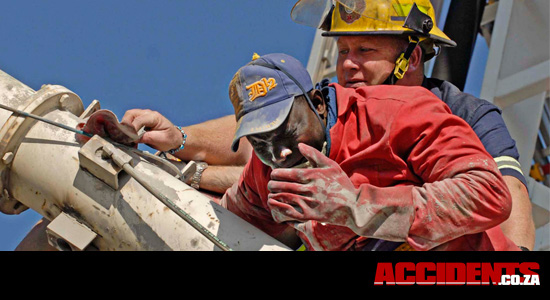Since 2003, the International Labour Organization (ILO) has observed World Day for Safety and Health at Work, stressing the prevention of occupational accidents and illnesses. The 28th of April is also a day the world’s trade union movement has long associated with commemorating victims of occupational accidents and diseases. The South African Occupational Health and Safety Act requires that employers protect their employees from workplace hazards that could cause injury. This is also an important requirement of the Responsible Care Health and Safety Management Practice Standard.
Where hazards such as sharp edges, falling objects, flying sparks, noise, dust or vapours of chemicals exist in the workplace an assessment must be undertaken to determine the most appropriate measures to protect workers. If Personal Protective Equipment (PPE) is to be used, a company PPE Program must be implemented. PPE is all equipment and consumables which are intended to be used by a person at work which protects him/her against one or more risks to his/her health or safety, e.g. safety helmets, gloves, eye protection, high-visibility clothing, safety footwear and safety harnesses.
Depending on the hazard or workplace conditions, legislation recommends the use of engineering (building a barrier between a hazard and the employees) or work practice controls (changing the way in which employees perform their work) to manage or eliminate hazards to the greatest extent possible. PPE should only be supplied and used at work wherever there are risks to health and safety that cannot be adequately removed or controlled in any other way and where all other avenues have been explored. A hazard cannot be eliminated by PPE, but the risk of injury can be reduced. For example, hearing protection worn by employees that work in noise zones reduces the likelihood of hearing damage when the muffs or ear plugs are appropriate for the kind of noise exposure and if used properly. The hearing protection does however not eliminate the noise hazard. “Hazards could exist in every workplace therefore strategies to protect workers are essential. The priority of employers should be the elimination and proactive control of risks at their source by ensuring an effective and relevant PPE Programme is implemented within their company” says Louise Lindeque Responsible Care Manager.
A company PPE Programme should consist of a workplace survey to identify the particular hazards and risks, selection of appropriate controls and PPE, fitting of the PPE, training, management support, maintenance and auditing of the programme. The programme must address the hazards present and the appropriate monitoring of the program to ensure its on-going effectiveness. It is recommended that the company’s Health and Safety Representatives and Committee be involved with the monitoring of the PPE programme during their workplace inspections, as this will assist with assessing its suitability and effectiveness.
Employers are responsible for providing PPE free of charge. It is also important to ensure that employees are trained in the use and care of the PPE including its maintenance, checking and replacement when worn, damaged or expired. The effectiveness of the chosen PPE programme must be reviewed and updated regularly and employees must consistently be reminded of the benefits of wearing their PPE correctly.
Ways to motivate employees to make use of their PPE is to involve them in the selection of the equipment and to consider the physical comfort of the PPE. This can be done by involving them in workplace trials so that they can evaluate its fit and comfort themselves. By doing this it is more likely that worker acceptability will be gained. Employers must also remember to always set a good example by showing that they are not above the rules by also using PPE in work areas where this is a requirement. Exceptions must never be allowed and disciplinary measures should be in place to ensure PPE is used at all times. However, each employee is also responsible for their own health and safety as well as the maintenance and care of all PPE assigned to him or her. Equally, employees have a responsibility to use the equipment properly and responsibly so that it adequately protects them.
It is useful to regularly remind employees that adhering to their company’s PPE requirements is for their own safety and for their protection against injury and negative health effects. Wearing their PPE correctly will allow them to go home safely at the end of their shift.
Responsible Care
Responsible Care is a global initiative by the chemical industry. It encourages its members to improve their safety, health and environmental performance and to raise the industry standards. All Chemical and Allied Industries’ Association members voluntarily sign a pledge, committing themselves to the guiding principles of RC. RC and CAIA play their part towards saving the earth for future generations. For more information visit www.caia.co.za/rescare.
